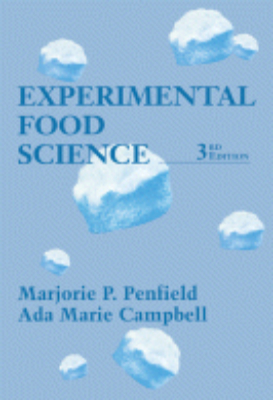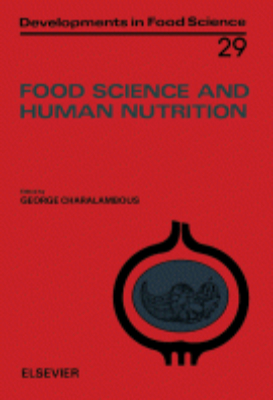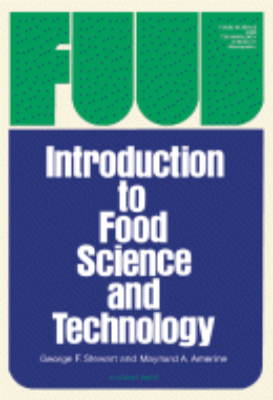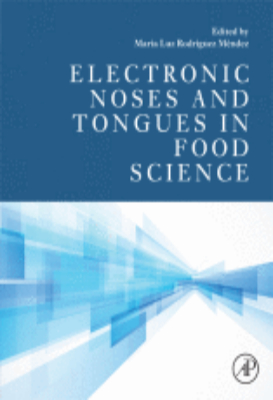E-Resources
Advances in Magnetic Resonance in Food Science
The highly versatile nature of magnetic resonance techniques in dealing with problems arising in many areas in food science is demonstrated in this book. Topics covered include development of the technique, functional constituents of food, signal treatment and analysis, along with applications of magnetic resonance to food processing and engineering. The international flavour of the contributions to this text aim to make it of value to both academics and industrialists in food science.
Education and Training in Food Science
This book reviews the need for increased training in the food industry in order to bridge the gap between Eastern and Western Europe and the USA. Higher education in food science is discussed, including the training of technicians, and European initiatives, including ERASMUS and Network, are also described. Full coverage of the importance of international trade and the consumer protection acts, including a look at the need of various groups, is provided and the book closes with a look towards the future.
Experimental Food Science
This textbook presents the scientific basis for understanding the nature of food and the principles of experimental methodology as applied to food. It reviews recent research findings and specific technological advances related to food. Taking an experimental approach, exercises are included at the end of each chapter to provide the needed experience in planning experiments. Emphasizing the relationships between chemical and physical properties, basic formulas and procedures are included in the appendix.
Food Science Reviews
Bridging the gap between journal articles and specialised books, Food Science Reviews provides expert coverage of key areas of food science. Drawing solely on contributions from leading scientists, the collated essays established themselves as a standard reference on the most interesting current work in the field. This topical first volume covers an area which is increasingly in the public and scientific eye. Expert contributions on all aspects of the microbiological and chemical safety of food provide a key review of food hygiene and safety.
Global Issues in Food Science and Technology
A selected compilation of writings by IUFoST organization supporters, Global Themes in Food Science and Technology were those identified as representing the most important and relevant subjects facing food scientists and technologists today. Chosen by an international editorial board, these subjects offer insights into current research and developments and were selected to stimulate additional interest and work in these key areas. The International Union of Food Science and Technology (IUFoST) is a country-membership organization is the sole global food science and technology organization. It is a voluntary, non-profit association of national food science organizations linking the world's best food scientists and technologists. The goals of their work include the international exchange of scientific and technical information, support of international food science and technology progress, the stimulation of appropriate education and training in these areas, and the fostering of professionalism and professional organization within the food science and technology community.
Introduction to Food Science and Technology: 1973
Introduction to Food Science and Technology focuses on the importance of food science and food technology to humans. This book discusses the total sequence of operations in food technology, which includes the selection of raw materials, processing, preservation, and distribution. Comprised of nine chapters, this monograph starts with an overview of the processing and storage of food. This book examines how the food processor often controls the producers operations by demanding a raw product of a certain type in order to satisfy a particular processing and consumer demand. Other chapters consider the primary concern of food scientists and technologists in the processing and preservation of raw agricultural products as nutritious and stable foods of acceptable quality. The final chapter deals with the variety of jobs available for those trained in the biological, physical, and behavioral sciences and their applications to food processing and food preservation. Food technologists, chemists, and scientists will find this book extremely useful.
Introduction to Food Science and Technology: 1982 Second Edition
The Second Edition of this popular textbook has benefited from several years of exposure to both teachers and students. Based on their own experiences as well as those of others, the authors have reorganized, added, and updated this work to meet the needs of the current curriculum. As with the first edition the goal is to introduce the beginning student to the field of food science and technology. Thus, the book discusses briefly the complex of basic sciences fundamental to food processing and preservation as well as the application of these sciences to the technology of providing the consumer with food products that are at once appealing to the eye, pleasing to the palate, and nutritious to the human organism. Introduction to Food Science and Technology is set in the world in which it operates; it contains discussions of historical development, the current world food situation, the safety regulations and laws that circumscribe the field, and the careers that it offers.
The Electronic Nose and Tongue in Food Science
Electronic Noses and Tongues in Food Science describes the electronic products of advanced chemical and physical sciences combined with intuitive integration of microprocessors, advanced bioinformatics and statistics. These include, for example, voltammetric, bio-electronic, piezoelectric platforms made from a variety of components including, nanoparticles, enzyme biosensors, heavy metals, graphite-epoxy composites, metal oxide semiconductors, microelectrodes, microfluidic channels, pre-manufactured gas sensors, redox enzymes and others and is an ideal resource for understanding and utilizing their power in Food Science settings. Devices used to analyse one particular food item can theoretically be adapted for other food items or components. This does not just mean the re-deploying the physical platforms but also the mode of bioinformatic and statistical analysis. This includes artificial neural networks (ANN), linear discriminant analysis (LDA), partial least squares (PLS), principal component analysis (PCA) etc. In other words, there is cross transference of chemistry, physics, concepts, techniques, findings and approaches from one food to another. Electronic noses and tongues are two of these devices but are advancing in application and importance. This book provides examples of the use of electronic noses and tongues to characterise components that contribute to sensory or compositional profiles, from ripening to harvesting and from storage of raw materials to packaging and consumption. These devises are suitable for high-throughput analysis, quality control or to determine the nature and extent of spoilage and adulteration, and have also been used to ascertain the geographical origins of food and mixtures.










